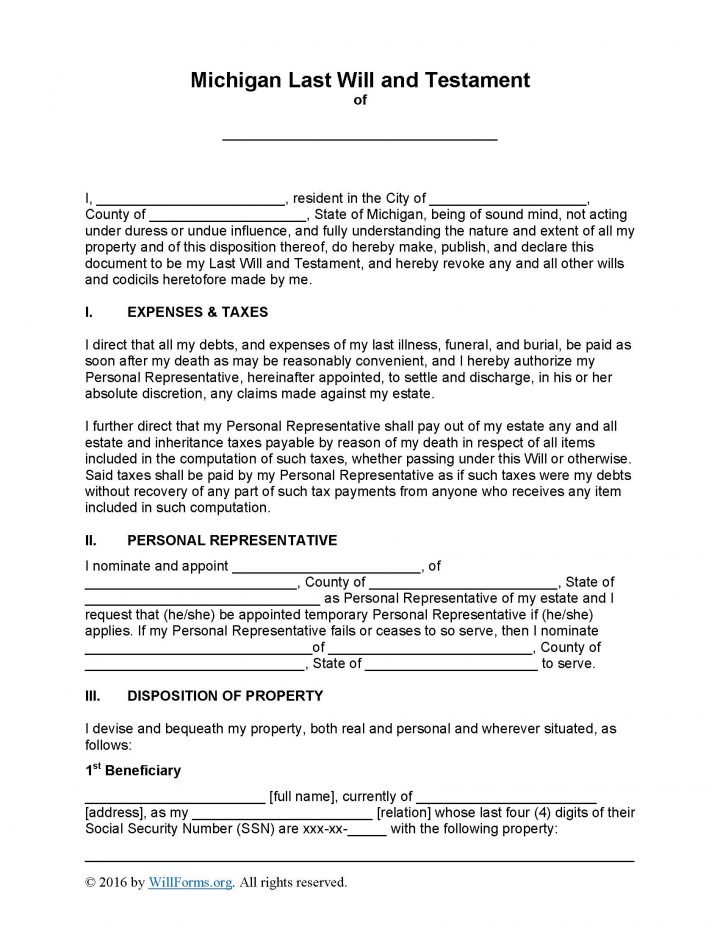
|
Michigan Last Will and Testament Form |
The Michigan last will and testament is a legal document that is designed to guide an individual (Testator) through the process of creating a standard will that will reflect the wishes of the Testator with regard to the division of their estate (real estate, personal property and/or financial accounts) to be left to their beneficiaries. As well, if the Testator has someone in mind with whom they trust to honorably distribute their estate, according to the written document, the testator may legally appoint that person as their executor within the document itself. Once completed, the form must be properly witnessed. The contents of the document may be changed or the document may be revoked at any time.
Laws – MCL §§700.2501, et seq.
How to Write
Step 1 – Download the document and enter the Testator’s name into the line at the beginning of the form- then submit:
- Testator’s name
- City
- County
- Read titled section “Expenses and Taxes”
Step 2 – Establish an Executor –Establish the executor by entering the following information:
- Provide the appointed executor’s name
- Street Address
- County
- State
Should the initially appointed executor become unable to serve in this capacity, an alternate may be established with this document as well. – Enter the following:
- Submit the name of the alternate executor
- Address
- County
- State
Step 3 – Disposition of Property –Submit all beneficiaries information. In the event there are more beneficiaries than will fit onto this form, add a sheet with their information and attach it to the form
- Beneficiary’s name
- Complete Address
- Beneficiary’s relationship to testator
- Enter the required the last four (4) digits of the beneficiary’s Social Security Number (SSN)
- The Testator must read over the next paragraphs
- If additional instructions are applicable, the Testator may add a separate sheet and attach
Step 4 – Titled Sections – Read:
- Omissions
- Bond
- Discretionary Powers of Personal Representative (subsections A through K)
- Contesting Beneficiary
- Guardian Ad Litem Not Required
- Gender
- Assignment
- Governing Law
Step 5 – Binding Agreement – The Testator must read and agree to the first paragraph. Submit::
- Testator’s name
- Date of the document’s execution (dd/mm/yyyy)
- Testator’s name
- Printed name
- Date of signature in dd/m/yy format
- Testator’s name
Step 6 – Witness Signatures and Notary Public – Signatories must be in the presence of a notary
Witnesses –
- Witnesses must enter their respective signatures and information
- Current addresses
Testamentary Affidavit –
- The notary shall acknowledge this document
- The notary will provide signatories names
- Testator will enter their signature
- Witnesses shall enter signatures

